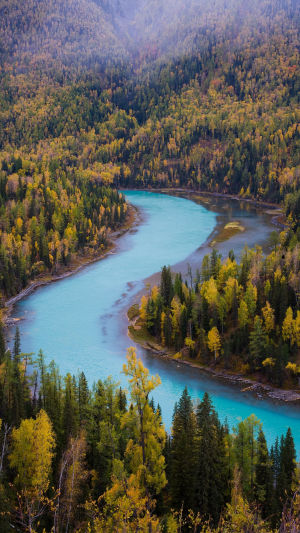The Earth is estimated to have formed about 4.6 billion years ago. Water on Earth has a history of more than 4 billion years and is believed to have come from the impact of early asteroids and the planet's water sources.
The Earth has been gifted with vast oceans since its birth and stores abundant water resources within its boundaries.
The ocean area on Earth is much larger than the land area, and the water on Earth seems to be endless. However, when we put water in a container, it will always expire and deteriorate after some time. So, how can animals still drink water that has existed on the Earth for more than 4 billion years?
Under normal circumstances, a well-packed bottle of bottled water has a shelf life of no more than 2 years. But, the water on Earth has been circulating and flowing forever, which makes it fresh and lively. The Earth is a magical existence with a powerful self-healing system and a perfect recycling system.
The Earth balances every substance, and the connection between every life is just right. The water evaporates, and then there is rain. The rain falls to the ground and then is filtered by nature to form water, which is always circulating and flowing forever. In a series of self-cleaning and regeneration activities, water also keeps all kinds of life on the Earth fresh and alive.
The flowing water has a high oxygen content, so there will be nitrifying bacteria, which decompose some organic matter and prevent water quality from being corrupted. The same is true for fish tanks. The water is circulated to cultivate nitrifying bacteria and ensure water quality.
This is the essence of running water that does not rot. In other words, the water on Earth effectively defends against the invasion of organisms and maintains its movement state during its non-stop movement. The water on Earth has been like this for 4.4 billion years, making itself not expire in a continuous cycle of motion.
The deterioration of water does not refer to the change of water molecules in the chemical sense. The deterioration we often say refers to the appearance of chemical substances harmful to the human body inside the object.
For example, food spoilage may be due to the growth of bacteria that are not conducive to human health. The same is true for water, which will breed bacteria after it is bottled. Therefore, the bottled drinking water we often drink will have a shelf life.
If water such as surface water or natural precipitation is packed in a sealed space such as a bottle, the flow of water molecules will stop, and the process of water participating in the natural cycle will also be cut off.
The liquid water in the bottle has no flow process, and the hydrogen and oxygen elements have no exchange and renewal process. The dissolved oxygen in the water is continuously consumed in the bottle, and eventually, the water body loses its self-purification ability, that is to say, it is "dead water".
The drinking water in the bottle, deterioration is inevitable. In the field of biochemistry, a sterile and airtight space can ensure the stability of the water molecular structure, but it is difficult for water to meet such harsh conditions after it is put into a bottle.
The water is sterilized before being bottled. At this time, oxygen, hydrogen, and other trace elements will produce corresponding chemical reactions in the bottle, which will breed bacteria for a long time and cause the water in the bottle to deteriorate.





